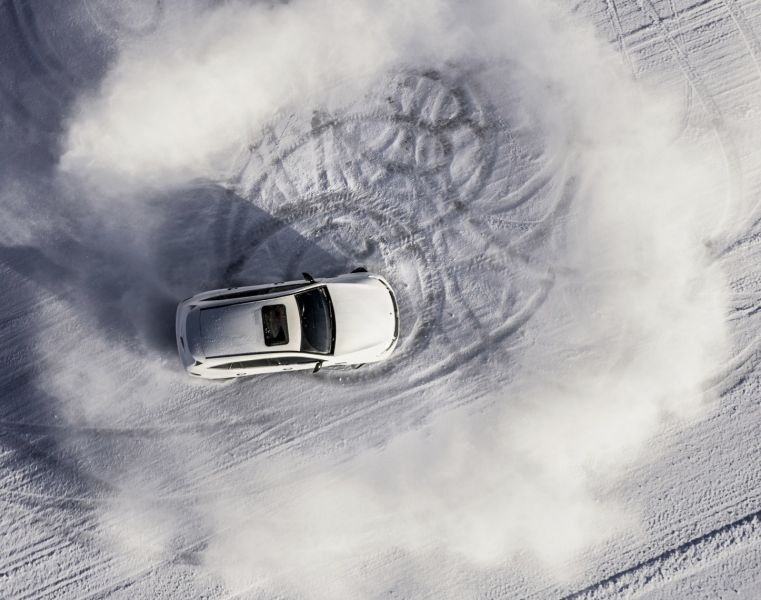
From December 1, vehicles in Latvia must be equipped with winter tires regardless of the weather. A survey* conducted by SIA "Domenikss" general representative for Daimler AG in Latvia shows that 89% of customers change their summer tires to winter tires as early as November, without waiting until 1st December. However, among the drivers surveyed there are also 2% who do it only when they slip. One in ten has been involved in a road accident involving the selection of tires that are not suitable for the weather, and a further 38% have witnessed such accidents or know people who have had such experience. How to choose the tires that are suitable for the weather and when to buy a new set of winter tires, explains Normunds Tarkšs, technical director of SIA "Domenikss".
How to know it's time for new winter tires?
According to the survey, 52% of drivers think that new winter tires should be purchased every 2-3 years, 14% mention a 5-6 year interval and 2% give their winter tires all 10 years. A further 16% say they do not have such a recommended interval, it should be guided by tread wear, while 12% say they do not know how long it would be advisable to run with one set of tires.
Normunds Tarkšs, the technical director of SIA “Domenikss”, admits that even if tire wear has not yet reached the maximum, it is not advisable to drive with one set of winter tires for more than 5 years. “Rubber is rubber, with age it becomes harder and loses some of the manufacturer's foreseen adhesion to the road surface. To avoid having to overdo the memory by trying to remember when the tire was actually purchased, drivers have a "crib" – each tire has a square or circle marked with four digits representing the time of production. The first two designate the week, the second two – the year. So the tire marked 4319 means it was manufactured in week 43, 2019. It is particularly important to look at this mark when buying used tires, as they often come on the market when they have spent a lot of time in a stock,” advises Normunds Tarkšs.
Another important factor to consider is tire tread wear. According to Latvian road traffic regulations, the minimum winter tire tread depth is 4 millimetres. Survey data show that only slightly more than half or 53% of the drivers surveyed know it. 18% admit they do not know how much winter tire treads can wear; 8% think 3mm is enough, while another 2% think it is written on a tire.
“It should be borne in mind that in the event of a road accident, insurers will definitely measure tread wear. If it is outside the permissible, it may result in the loss of insurance. Therefore, even if your winter tires are only a couple of years old, but the tread is worn out, it is time to buy a new set of tires,” warns Normunds Tarkšs, adding that if you find it too difficult to keep up with such nuances, you will be warned about the need to replace the tires by a service master. According to a survey conducted by SIA “Domenikss”, 46% of drivers buy new winter tires on average every 3 years, 22% do so even more often, and 14% rely on the advice of a foreman.
Does winter really start on 1st December?
Although the 1st December has been adopted as the dividing line for replacing summer tires with winter tires, it is far too late, acknowledges the technical director of SIA "Domenikss". “Summer tires may become hard and lose grip when temperatures drop below +10 degrees, which increases the stopping distance and the risk of skidding in turns. Therefore, you should think about changing tires earlier, based on temperature changes, not the dates. It is typical for Latvian climate that in October it can be suddenly +15 degrees, but it is usually only a couple of days. In addition, scheduling tire changes early will save you long queues,” explains Normunds Tarkšs, adding that it takes approximately one hour to change tires, but with the first snowfall, the demand for this service will be much higher, and then it will take much more time. The drivers surveyed also admit that they either rely on an authorized/certified service centre or go to the nearest tire service centre and tire change centre and only 10% change their tires themselves in the garage.
Used tires – greater risk of rupture
There is always the possibility of breaking or puncturing a tire, e.g. on a tram rails or in the case of a sharp object, for both summer and winter tires. At the same time, Normunds Tarkšs emphasizes that a hard-worn tire is more fragile and more easily to damage than a new one. “If you happen to have a hole in the tire, you should definitely not patch it, because unfortunately such holes tend to rupture further. Smaller holes are sometimes patched up by placing the so-called "mushroom" in driver's jargon; in unauthorized services, tires are also vulcanized, but these are not safe solutions. Unfortunately, when buying used tires, you have to take into account that you may not notice any defects until you fit the tire on the rim,” says the expert. Repaired tires may lose their geometry, become oval, and may have raised protrusions or "bumps" that become visible only when the tire is already mounted and the vehicle is on the balancing device. Normunds Tarkšs says – if a tire is bought "out of hand," it will be quite difficult to get any warranty from such a seller. It should be noted that used tires are not always, but quite often, with problems, as people sell them mostly to free up space in the garage, and less often because they have bought a newer kit, or as a bonus when selling a car.
All season tires – advantages and disadvantages
According to a survey, 6% of drivers do not change their tires at all, as they drive all-season tires all year round. This may be particularly relevant for drivers on gravel roads in the countryside or on other roads that do not provide good traction even in summer. “Many drivers in Latvia ride all-season tires marked 'snow and mud' – hence for snow and mud. But, what fits all, maybe not to say fits nothing, but is not better than to choose summer tires in warm weather and winter tires in cold. All-season tires wear out faster in summer due to the air temperature and our road surface, and then fail to provide the needed quality in winter,” the expert explains.
How to store tires properly?
Normunds Tarkšs, the technical director of SIA “Domenikss”, adds that in order for the tires to be of the correct quality throughout the life foreseen by the manufacturer, their owners should abandon bad habits, such as storing winter tires on the balcony or in an open place. “Tires need a dark space, preferably cooler, where they are not exposed to direct sunlight and are not affected by temperature fluctuations. For tires not mounted on the wheels, it is better to keep them lying down so as not to lose their shape; discs can also be stored vertically,” advises Normunds Tarkšs, and reminds that high-quality winter tires are not a whim of a road rules makers or tire manufacturers, but a reliable vehicle safety guard.
*A survey on winter tire change habits of customers of SIA "Domenikss" was carried out in October 2019.







